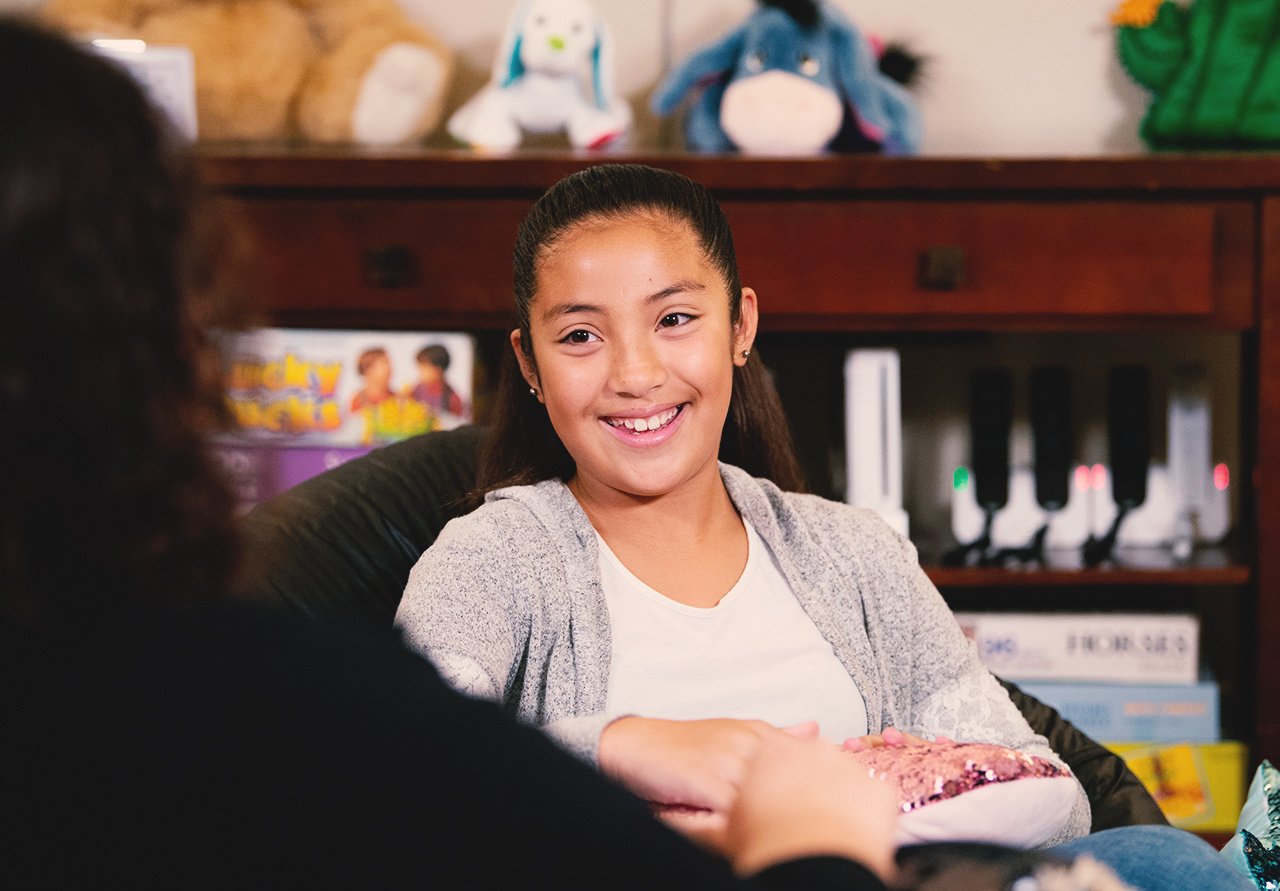
As fast as technological advances spawn new social media outlets, teens readily create accounts on these new social networks and spend much of their free time online. Around 81% of teens use social media and 65% of teens with social media accounts log on more than once a day. With many teens signing on to sites and sharing personal information, do they consider privacy settings, information they display, or the short- and long-term effects of displaying such information? The shocking truth is very few do.
Social Media: A Gateway for Child Predators
Do you know what your children display on their social media accounts? Technological advancements spawn new social media outlets, and teens flock to the websites, ready to share personal information to millions of strangers. Online predators follow suit, racing to social networking sites, eager to find individuals ready to share personal information so they can exploit them. Few children consider the consequences of the information they share online, not realizing 82% of cyber stalkers use social media to find information about potential victims and 65% of cyber stalkers use social media to discover where kids live and what school they attend. Teens will even get creative with their privacy settings and hide information they should be sharing from their parents.
Most Popular Social Networks Among Teens
Social networks are launched or changed frequently. Facebook remains the most-used network between ages 12-24, but other social networks are growing in popularity.
- 74% of teens use Facebook
- 59% of teens use Instagram
- 57% of teens use Snapchat
- 32% of teens use Twitter
- 30% of teens use Vine
- 20% of teens use Pinterest
The average teen using social media has 300 Facebook friends, 79 Twitter followers, 150 Instagram followers, and receives more “snaps” from Snapchat than texts. Facebook, Twitter, and Instagram are used mainly to share images through their mobile device. 21% of teens believe using a mobile device allows them to hide information from their parents more effectively.
Teen Privacy Concerns Misaligned
Social networks are notorious for having complex privacy settings, but are teens or parents concerned about privacy? Only 9% of teens said they are “very concerned” about privacy on social media sites while 78% of teens said they felt in control of their social networking sites.
Teen Levels of Concern about Online Privacy
- 9% are very concerned
- 31% are somewhat concerned
- 38% are not too concerned
- 22% are not at all concerned
An additional 70% believe they understand privacy protection on Facebook, but only 40% of teens keep their Facebook profiles private. When teens do show concern for social media privacy, they focus on hiding things from:
- Authority figures
- Teachers
- Future employers
- Parents
Rather than focusing on:
- Identity theft
- Damaged reputation
- Legal issues
- Conflict
- Predators
How Teens Cover Their Tracks Online
50% of parents believe teens tell them everything they do online but don’t realize that 70% of teens hide their online behavior from their parents and 25% of teens say their parents know “little” or nothing” about their online behaviors. Teens hide their behavior through a variety of surreptitious methods:
- 80% of teens have used privacy settings to hide content from friends/family
- 53% clear their browser history
- 46% close/minimize browser when parent walks in room
- 34% hide or delete Instant Messages (IMs) or videos
- 23% lie or omit details about online activities
- 21% of teens use a mobile phone to access the internet and hide activity from their parents
- 20% use privacy settings to make certain content viewable only by friends
- 20% use private browsing modes
- 15% create private email address unknown to parents
- 12% override parental privacy settings
- 9% create duplicate/fake social network profiles
Hiding information is not the only method teens use to avoid trouble. The Pew Internet study found 26% of teen social media users post fake information such as a false name, age, or location and 8% of teens create separate social media accounts, connecting with parents on one account and using the other to share more content and interact with people.
Teens will also use what is referred to as “social steganography,” a method of hiding information in plain sight by posting to social media using vague language such as “not being in a happy state” or acronyms to open communication amongst a select group of individuals.
What are Teens Sharing on Social Media?
Teens may feel they control their privacy settings and are able to hide information they share on social media from their parents. However, teens share information that puts them at risk.
- 92% of teens share real name on most social media platforms
- 92% of teens post real pictures of themselves
- 71% of teens list which school they go to
- 20% share cell phone number
- 19% share email and social media passwords
- 16% auto-share location in posts
Most alarming is 33% of teens are friends with people they’ve never met off-line (click to tweet this stat) and a third of teenagers who meet people online have then met up with some of these people face-to-face.
Opening the Door for Predators
When teens “friend” individuals they don’t know or share sensitive information on social networking sites, they are at greater risk of encountering a predator online.
- 3 out of 10 teens in the United States have been stalked by complete strangers on Facebook and received friend requests from people they didn’t know.
- 69% of teens regularly receive online personal messages from people they don’t know. Most don’t tell a trusted adult.
- 16% of teens say they’ve considered meeting face-to-face with someone they’ve only chatted with online.
- 82% of cyber stalkers use social media to find out information about potential victims.
- 65% of cyber stalkers use social media to discover where kids live and what school they attend.
- 1 in 6 teens have been contacted online by a stranger in a “way that made them feel scared or uncomfortable.”
- 1 in 20 teens admitted to arranging a secret meeting with someone they met online.
Who are the Predators?
- Most are male
- 76% are over 26 years old
- Like to meet in chat rooms
- Only 5% of predators pretend to be the same age as their victims
How Predators Gain a Child’s Trust
Online predators research current trends and use them to open conversation with children and teens. Once they have a teen’s interest, they listen to and sympathize with their problems and begin to seduce children by lavishing them with attention, affection, kindness, and even gifts.
Predators slowly introduce sexual content into their conversations and begin to evaluate children as prospective candidates to meet in person.
100% of victims of online sexual predators have gone willingly to meet with the predator.
Where Predators Lurk
- Social networks
- Blogs
- Chat rooms
- Instant messaging
- Chat features on game apps – sneaky!
- Discussion boards
- Other websites
Online predators are difficult to identify because of the drastic difference of how they represent themselves in person and online. Online predators seek children that appear vulnerable, lonely, sheltered, or naïve. Predators also focus on teens that have access to accounts with private messaging.
- 16% of all social media stalking occurs on Facebook
- 83% of stalking incidents are not reported to law enforcement officials or parents
While Facebook remains the most prevalent site for social media stalking, emerging social networks are creating other opportunities:
- Instagram – Instagram has become the second most popular social network and has become a popular network for predators. Instagram has had an issue with teens posting explicit pictures and has taken steps to crack down, but predators are finding ways around settings.
- Kik – Kik is an alternate to texting that doesn’t require a phone number. All children need is access to a mobile device and Wi-Fi. Kik has no parental controls so children can access adult content with strangers any time.
- Snapchat – Snapchat is a photo-sharing app where photos and videos delete themselves in seconds. This helps predators lure teenagers into a sense of security, providing a chance to ask for explicit content. It is difficult for parents to know what their children are sending unless they access the app while an exchange is happening.
- WhatsApp – WhatsApp has 450 million users and, like Kik, is an alternative to text messaging. WhatsApp is frequently used by predators but WhatsApp provides tracking services so parents can monitor who their children are chatting and what they’re sharing. Parents also have the ability to block the app.
- Tinder – Tinder is a dating app designed for adults, but a recent study found 7 percent of users are between the ages of 13 and 17. Tinder is a location based app that allows users to narrow a location down to one mile.
Parents should also note emerging social networks such as Bebo, Hyper, Ello, and Tumblr as they have shown growth in popularity amongst teens.
More Parents Taking Action
More parents are concerned that their teenager’s online activity puts them at risk while possibly hurting future career options as well. More parents are observing, discussing, and monitoring their teen’s digital footprints.
72% of parents of online teens are concerned about how their child interacts online with people they do not know, with some 53% of parents being “very” concerned.
This video explains how parents must communicate with their children about internet safety.
When parents talk to teens about internet safety and security, teens are 40% less likely to consider meeting someone face-to-face with whom they only know from the internet. 50% of teens also said they would change their behavior if they knew their parent was watching.
How to Keep Your Teen Safe
Parents can talk to teens about internet security in a variety of ways:
- Establish boundaries – Explain acceptable behavior on social media as well as the amount of time that is acceptable.
- Disable location sharing on phones and social media – You might have to dig around for directions on each site, but have your teen hide locations when posting updates and chatting.
- Stay informed of threats – Knowing the latest trends and social networks allows parents to stay informed and know what teens may or may not be sharing. Staying informed may also encourage teens to share more information with their parents.
- Discuss privacy settings – Educating teens about privacy settings and managing their accounts helps prevent information from falling in the wrong eyes. Parents may also consider placing parental controls on children’s devices. 40% of parents have already done so and 90% of parents that have parental controls installed feel their child is safer because of it.
- Keep computer in central location – and limit age when children get smart phone
- Use Software filters – programs like Net Nanny can monitor sites, block chats, mask profanity and set up time controls.
Opening communication with teens encourages discussion around and allows parents and teens to communicate about troubling situations. Having healthy communication can assure parents that their teen is using social networks in a safe way and prevents teens from engaging with online predators.
Contact us about counseling for troubled youth
Call us at 1-877-300-9101 to schedule an appointment or request more information from the dropdown below.










